The diesel locomotives of narrow-gauge Kalka-Shimla Railway takes its passengers to the capital of the Himachal Pradesh, to the charming town named Shimla. The term ‘Shimla’ brings the smell of the fresh Himalayan mountains, the sight of amazing British architecture. The introduction of Shimla was excellently described in the words of Peter Aronson and Yésica del Moral:
Spread across seven hills in the northwest Himalayas among lush valleys and forests of oak, rhododendron, and pine is the capital of Himachal Pradesh that was once the summer capital of colonial India. And today, there is still more than a hint of the Raj in the former hill station of Shimla.
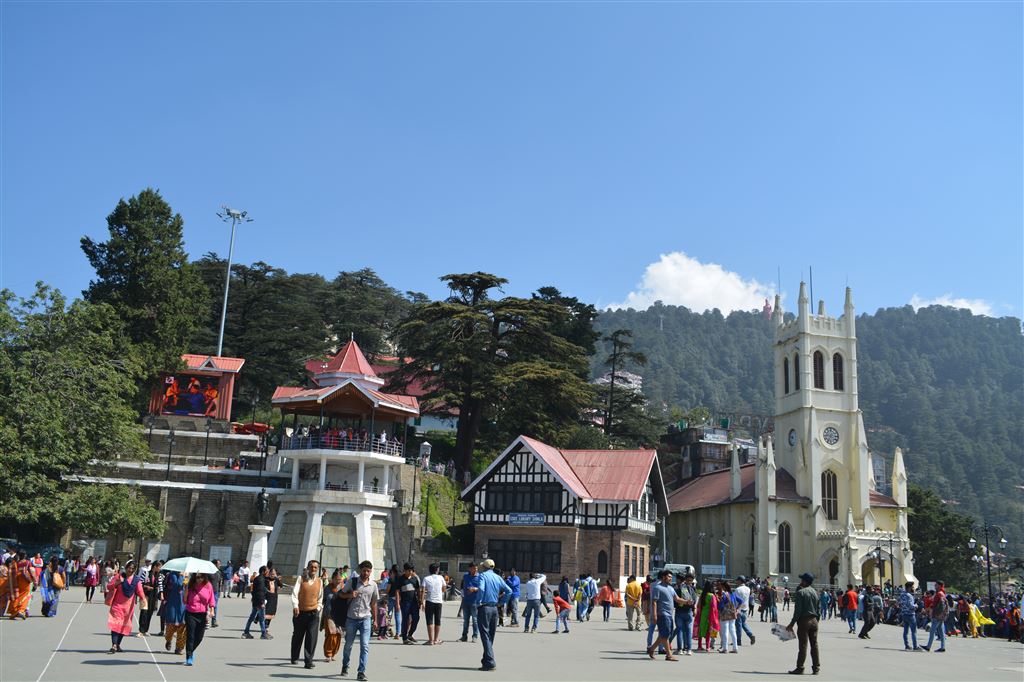
Moreover, this city is still one of the most popular hill-stations in India. Our trip to Himachal Pradesh had started with Shimla on a beautiful autumn day. Although the time was short, the city had given us a full dose of history and culture, with the amazing beauty of the surrounding Himalayan Mountains.
The Arrival
I had been visualizing my arrival to Shimla in a diesel locomotive, slowly enjoying the calm beauty of the Himalaya, through the small villages. My dream remained unfulfilled due the odd hours of the train, and the route we needed to take for the arrival. We had arrived at the city Ambala, one of the main gateways of Shimla and the other towns of Himachal. The distance was over 300 kilometers, so we had to set up for Shimla as early as possible.
It was almost midnight when we had reached the city. Except for the lights in the hill slopes, none of the charms of Shimla was visible in the dark. The feel of the Himalaya can be sensed in the sudden drop of the temperature, in the freshness of the air.
The first ray of the sun had brought the fantastic vision of surrounding Himalayan mountains, visible from our windows itself. We couldn’t wait to explore this city, so we had started our trip early morning, just after the breakfast.
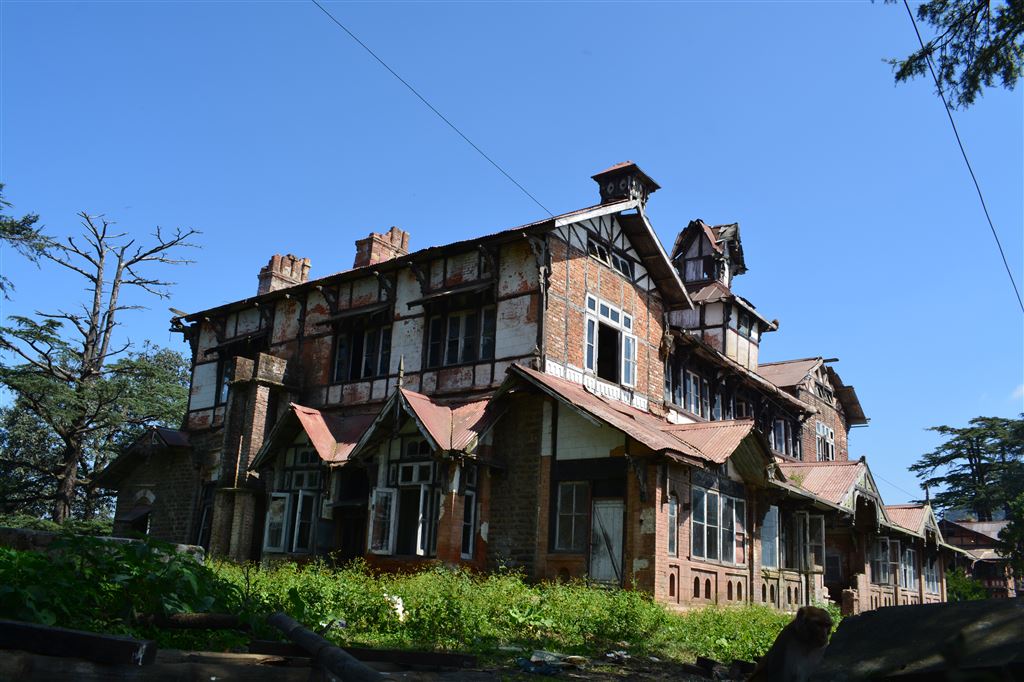
The History of Shimla
Like most of the other hill stations of the Himalayan region, Shimla was created as the summer retreat of the British settlers in India. Back in the 18th Century, the entire area of Shimla used to be dense forest. There was an ancient temple named Jakhoo Temple, dedicated to Lord Hanuman at the Jakhoo Hill. According to the legend, Lord Hanuman had stopped in this place while searching for the Sanjivni Booti. This Sanjivni Booti had the property of reviving a human from death. Till date, this temple can be seen in the similar place, on the outskirts of the main town of Shimla. In the year 2010, the tallest statue of Lord Hanuman was placed in this temple.
The city is supposed to be named after Goddess Shyamala, a form of Goddess Kali. It is believed that the temple of Goddess Shyamala was based on Jakhoo hills at the early age. At that time, the area around the temple was full of deodar, pine, and oak forests. Around the 18th Century, the British Army had defeated the Gurkha Army and destroyed their habitats. The defeated Gurkhas, after the war, had taken residence in this area.
The documented history of the Shimla region started during the Anglo-Nepalese war, which had taken place during the year 1814-1816, due to the invasion of the Bhimsen Thapa from Nepal. They were defeated by the British East India Company, and the area was taken over by the British. The East India company later awarded the reign of this region to the royal family of Patiala, Punjab, who had allied the British during the war.
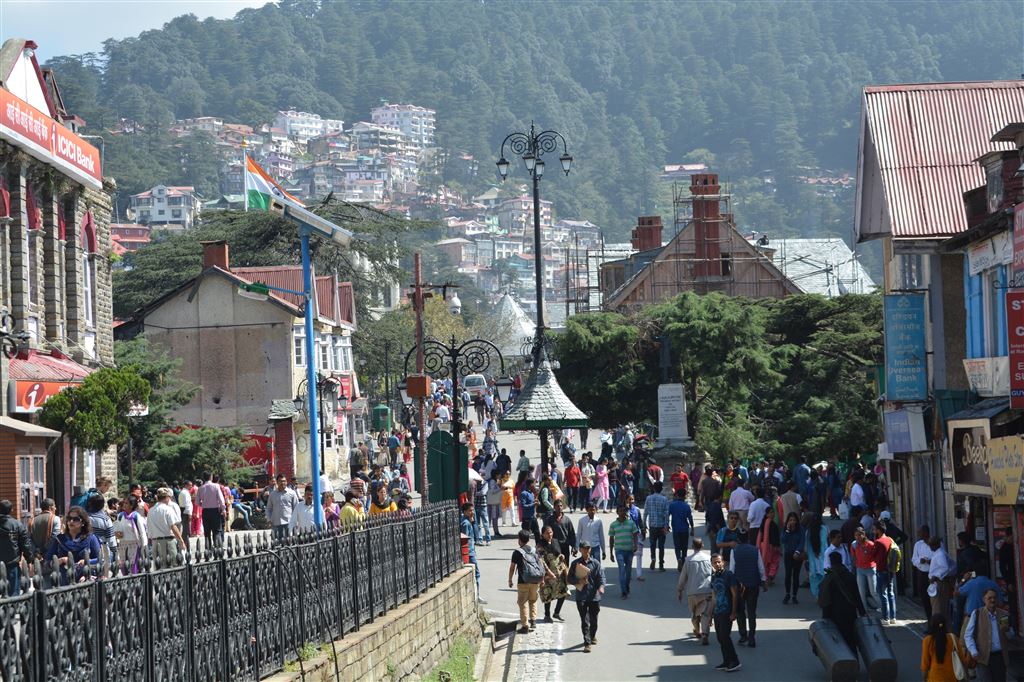
Due to its pleasant weather, unlike the warm climate of the rest of the country, this town had soon become the favorite place for vacation. The British officers had started to travel to this town during the summer-time. The British political agents, senior officers, started to build their own houses in this town. Soon, the town had become one of the main bases of the British officials and their families.
After the independence of India, Shimla was declared as the capital of the state Punjab. Later, a new state named Himachal Pradesh was born, and the capital of Punjab was shifted to Chandigarh. The town Shimla is still the capital of the state Himachal Pradesh.
The Station of the Narrow-Gauge Kalka-Shimla Railway
The architectures from the British era are still the glory of this town. Our hotel was a bit far from the main city, located technically in the lap of nature. Our day had started with an English breakfast, overlooking the snowcapped mountains of the surrounding Himalayas. The drive to the main city was short, but not entirely traffic-free. The first stop of the day was the station of the narrow-gauge Kalka-Shimla Railway. My desire to arrive in the town through this rail had remained unfulfilled, yet I couldn’t resist the temptation of visiting the Railway station based on Shimla. The main attraction of this ride apart from its incredible scenic beauty is the tunnels through which the train has to pass. The train has to pass through more than 100 tunnels to complete the journey till Shimla from Kalka. This railway had started back in 1903, which had got the honor of being a UNESCO World Heritage Site in the year 2008. The railway station was located downhill from the main road. Our car had left us on the main road from where we started to descend on the narrow mountain road to explore the station.
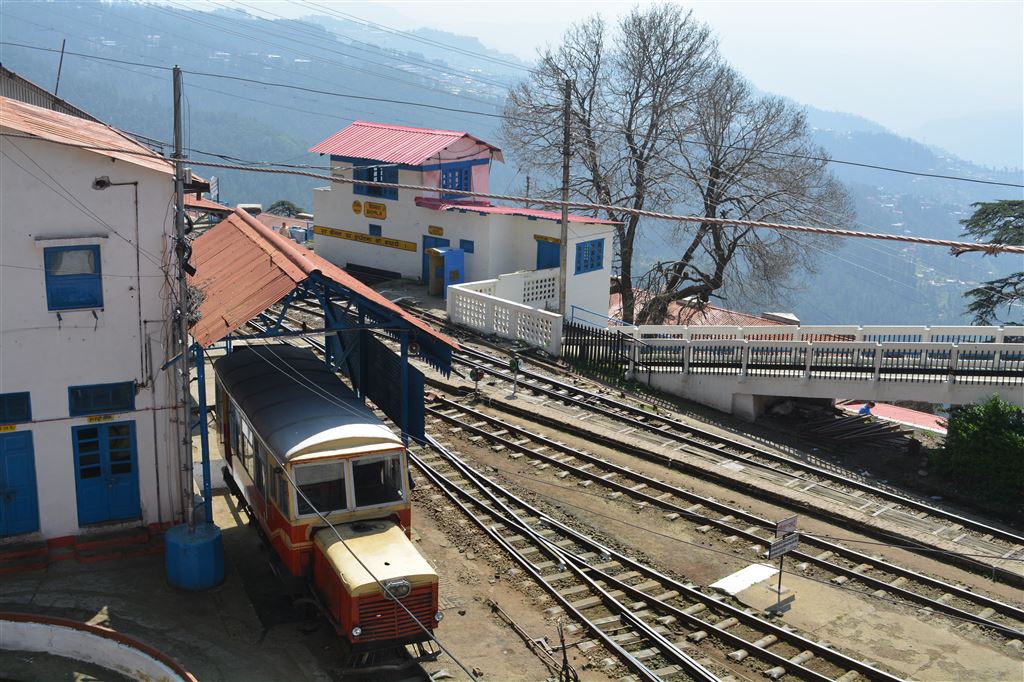
The station is based on the hilly slopes of the Shimla city. Although we were not fortunate to get a glimpse of the elusive narrow-gauge diesel locomotives, there was a mini sample- an engine was kept on display. The area around the station featured the old English architecture, offering a great view of the surrounding area. After a pleasant walk through the almost vacant station, we headed to our next destination, hoping next time we could enjoy another trip on the diesel locomotives.
The Shimla Kali Temple
The city center and the main tourist point of the Shima is located walking distance from the station of narrow-gauge Kalka-Shimla Railway. After climbing up from the station, we were headed towards our next destination. Our destination was the famous Shimla Kalibari or the temple of Goddess Kali. The temple is one of the most popular temples for the Hindu Devotees.
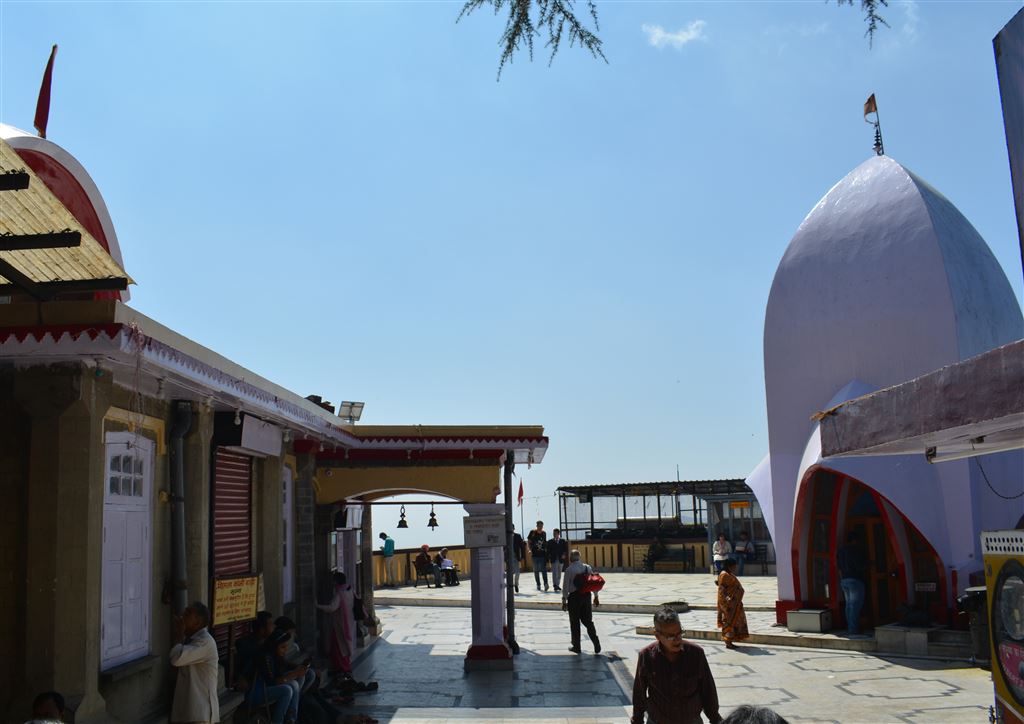
The town Shimla features Goddess Shyamala, one of the versions of Goddess Kali. ‘Kali’ is the destructive version of Goddess Durga, the wife of Lord Shiva. Goddess Kali is most popular in the Eastern part of India, at Bengal. However, the temple of the Goddess Shyamala was based on the region of Shimla from a very ancient era. The town itself has got its name from this goddess. The original temple of the Goddess Shyamala was located on the Jakhoo hills. In the era of the British, they had shifted the temple to the current location in the year 1845.
This new temple is located over a very steep hill, very close to the city center. We had to climb this steep hill on foot, which was a very difficult but adventurous experience. At the entrance of the temple, there are various colorful shops for the offerings of the goddess. Though the lines of these shops, we had entered into the holy temple which was full of devotees as well as the travelers. The temple is technically located on the top of a hill, featuring lots of open spaces. The idol of the Goddess Shyamala was located in the main building of the temple. There is also another shrine, a typical structure of a Hindu temple which is dedicated to Lord Shiva.
After spending a refreshing time visiting the temple and enjoying the excellent weather, we had set for the Mall road, the famous city center of the town. The Mall road is located very close to the temple. It can be accessed through a direct route.
We were advised to try the street foods of this city on the lane beside the temple. So, on our way, we couldn’t resist the temptation of trying out the famous chats of the Shimla. The roadside chat shops of this area were offering the mouth-watering street foods, like Panipuri, Papri chat, Bhelpuri and some other delicacies. At first, it was difficult to choose, but I finally settled for Papri chat. The taste of chat of Shimla is different from the other parts of India.
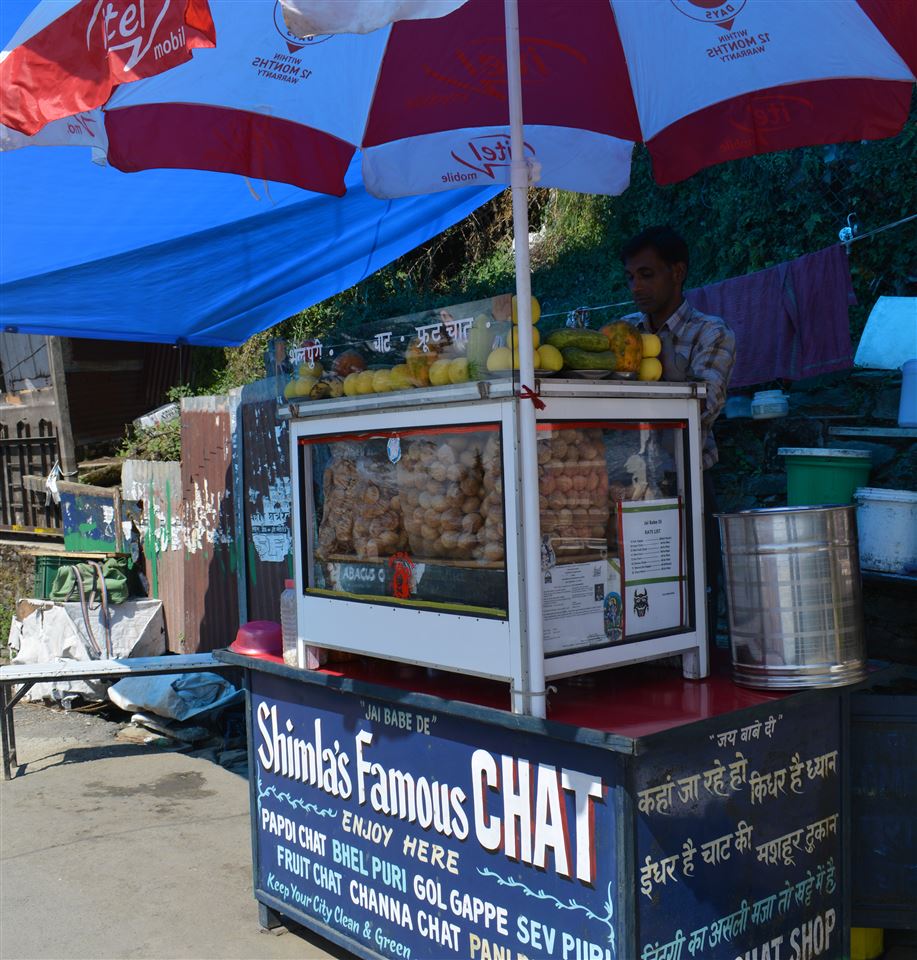
On the Way to the Mall Road
After tasting the amazing chats, we proceeded towards the Mall road. On the left, we got to see the famous grand hotel in Shimla. The grand hotel of Shimla has a long history that can be traced back to the 19th Century. On this site, there used to be the residence of Lord William Bentinck, the Governor General. Back then, his residence used to be known as the Bentick castle. After Lord Bentinck, the property was transferred to Sir Henry Lawrence. After that, this property was handed over to the Shimla Bank. From the year 1850-1887, this property was under the ownership of the Shimla Bank. After the liquidation of the bank, the property was purchased by the New Club. Then the property was established as a lavish club featuring excellent dining hall, dance floor, and well-built rooms. Even after creating a lavish feature, this club couldn’t compete with its rival club, ‘The United Service Club’.
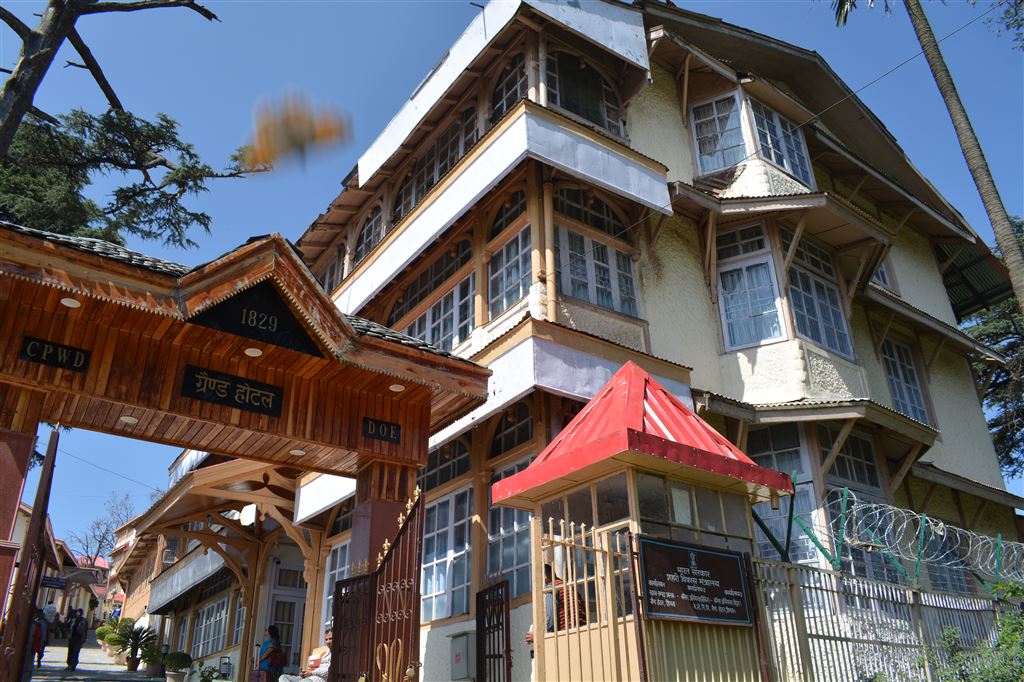
However, in the year 1892, the property was purchased by Chevalay Pelity and turned into a lavish hotel. This hotel remained as the most lavish hotel in the town until a huge part of this hotel got destroyed by the fire in the year 1922. After the restoration, it was overtaken by the Ministry of Urban Development Government of India. The hotel remained as the most lavish stay of the town, until the 1960s. Gradually, it had started to face the problems of shortage of water, lack of updating. The hotel had eventually closed down. In the year 2000, again a new initiative was taken to rebuild this property by the Ministry of Urban Development Government of India. After the restoration and modernization, it was opened to the public in the year 2002. Rich in history, yet, equipped with all modern comfort, this property is one of the most famous stars of Shimla nowadays. The other two advantages of staying in this property are the proximity of Mall road and an amazing view of the surroundings. Unfortunately, we weren’t lucky enough to get the reservation at this hotel for our visit, as it was the peak season of this town.
Just beside the Grand hotel, there were two other impressive buildings, which are yet to be restored. One of these building was called the Bantony castle. Featuring the typical British Architectures, these two buildings were also impressive, and full of excellent potentials to be the prime piece of properties. After these impressive views, the lane had directly ended in the famous mall road.
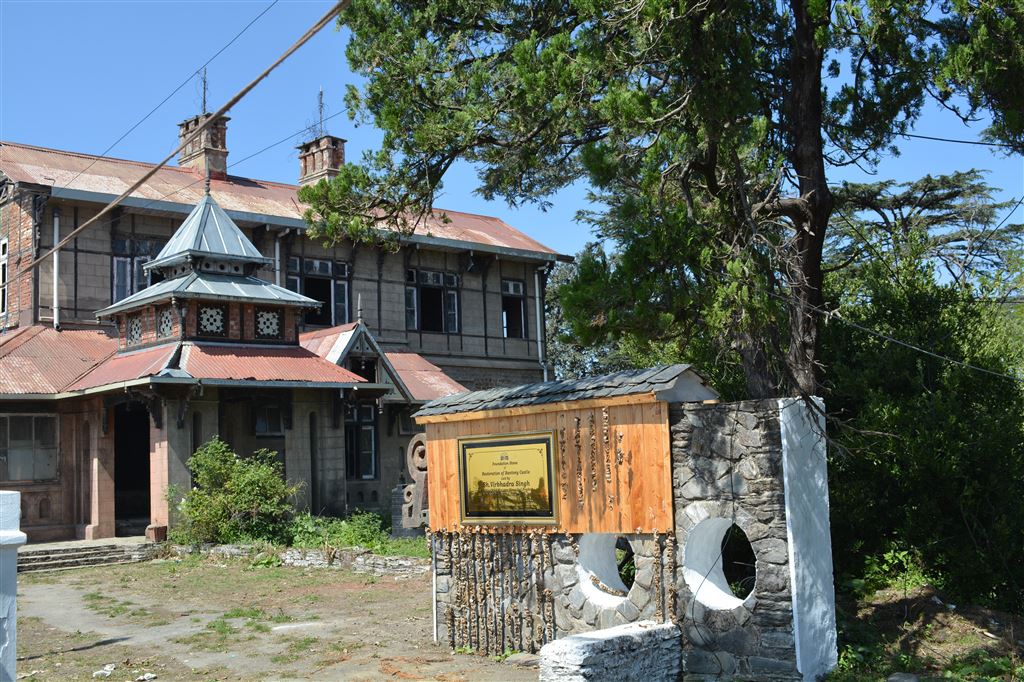
Roaming Through the Mall Road, Shimla
At first glance, the Mall road was crowded, overwhelming and gorgeous. A number of shops, restaurants were lined up at the side of the road. Apart from the shops and restaurants, the important buildings of the city like the offices of the municipal corporation, police headquarters, fire service are also located on the Mall Road. The main landmark of the mall road is the Christ Church. The Christ Church of Shimla is the second oldest church in Northern India. The church was built in the era of British Raj, to suit the need of the British and Anglo-Indians residing in the city. Designed in neo-Gothic style, the church is an architectural delight. Unfortunately, for the lack of time, we couldn’t visit the inside of the church. We were also shown the Gaiety Theatre. This theatre was constructed in the year 1887, for the entertainment of the British and the native peoples of Shimla. The shops in the Mall Road were selling almost everything, but I was disappointed not to find any native brands of Shimla. Our visit to the mall road ended with a visit to the traditional café on Mall Road, the Indian Coffee House.
The town of Shimla was full of surprises in every part. Unfortunately, we had only one day to visit this city. It was technically impossible to cover the entire city in just one day. On one side, it was also a good excuse to plan the next visit to this city. So, with the hope of revisiting this city soon, we had concluded our trip to Shimla.